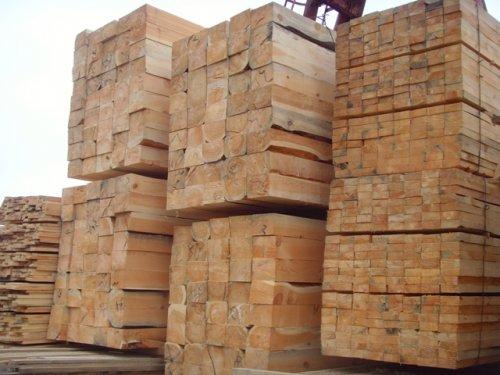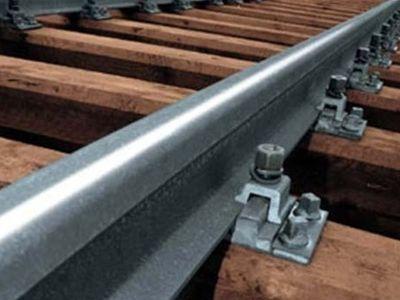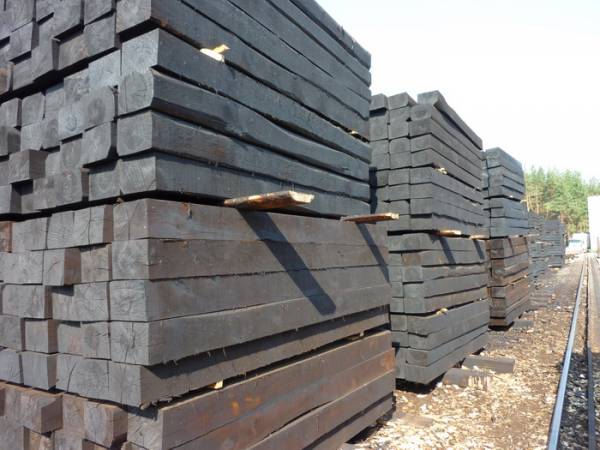 |
 |
 |
What we do provide: We are able produce wooden products according to customer’s requirements: edged/non-edged timber, of any dimensions, treated/ untreated, made of: oak, beech, pine, fir.
Length: 0.9m - 6.5 m
Width & thickness: 50/50mm- 300/300mm
Treatment: we are able to provide you both creosoted and/or untreated wooden sleepers.
Payment : L/C, T/T
Delivery time: 30 days from the time we receive L/C notification or 30% cash in advance.
For further information do not hesitate to contact us.
Benefits of wooden railway sleepers vs. concrete / steel sleepers:
1. Transportation: When in transit and during handling, sleepers are likely to bear hits and knocks, wood is better able to withstand surface damage whereas the galvanised face of a steel pole is thin and can easily be damaged leaving the steel open to the elements and causing rust.
2. Ease of Machining: The ease of which timber can be machined means we are able to tailor our stock range of sleepers to your individual requirements and specifications. Bespoke design is a much more costly and time consuming process when dealing with steel and concrete.
3. Ease of Installation and Maintenance: Timber is a lighter material that steel or concrete, making it easier to handle. This means that the installation time and man power required is greatly reduced, saving you money. Throughout the life of your sleeper being lighter also makes it far easier to maintain and handle, should it require any attention.
4. Cost Saving: Wood sleepers are less expensive that steel in many areas. These include the raw material cost and transportation, and we are able to pass these savings onto you.
Furthermore timber sleepers are easier to install and modify on site, meaning you will be constantly saving money throughout the life cycle of your sleeper through reduced maintenance costs.
Railway Sleepers Creosote Impregnation Process:
1. Planning
Before impregnation process, railway sleeper surface is smoothed on the planning machine and sleeper screw holes for subsequent mounting of gauge accessories are drilled by means of a drilling machine. Beech wood railway sleepers always undergo the planning phase - surface levelling in the rail bearing area. On client's request sleeper screw holes can also be drilled before mounting. At the same time, 6 to 8 holes (the so-called diffuse holes) are drilled in the central part of the lower railway sleeper bearing for better penetration of oil into the railway sleeper.
2. Creosote Impregnation process
The process consists of several phases:
- Filling and closing autoclave.
- Forming air pressure of 0.5 to 4 bar
- Maintaining air pressure.
- Filling autoclave with heated oil under air pressure.
- Increasing pressure to 8 bar.
- Maintaining pressure.
- Releasing oil from the autoclave.
- Forming vacuum of at least 0.8 bar.
- Maintaining of the attained vacuum.
- Forming air pressure of 2.5 to 4.0 bar.
- Maintaining air pressure.
- Filling impregnating autoclave with heated oil under air pressure.
- Increasing oil pressure level to 9 -10 bar.
- Maintaining oil pressure.
- Releasing oil from the autoclave.
- Forming vacuum of at least 0.8 bar.
- Maintaining vacuum.
- Opening impregnating autoclave and taking railway sleepers out.
The pressure is maintained as long as it is necessary for the railway sleepers to absorb the set quantity of oil. After the completed impregnation process (which in the relevant case lasts for 12 hours) the railway sleepers are drawn out from the autoclave and transported to the calibrated scale. The average oil absorption amounts to 130kg/m3 .
